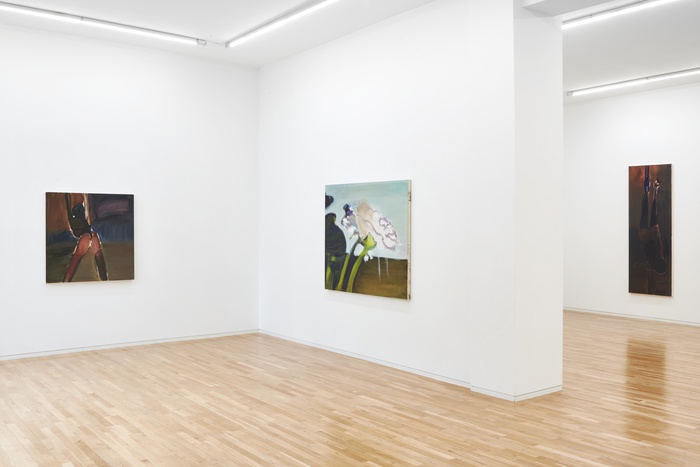
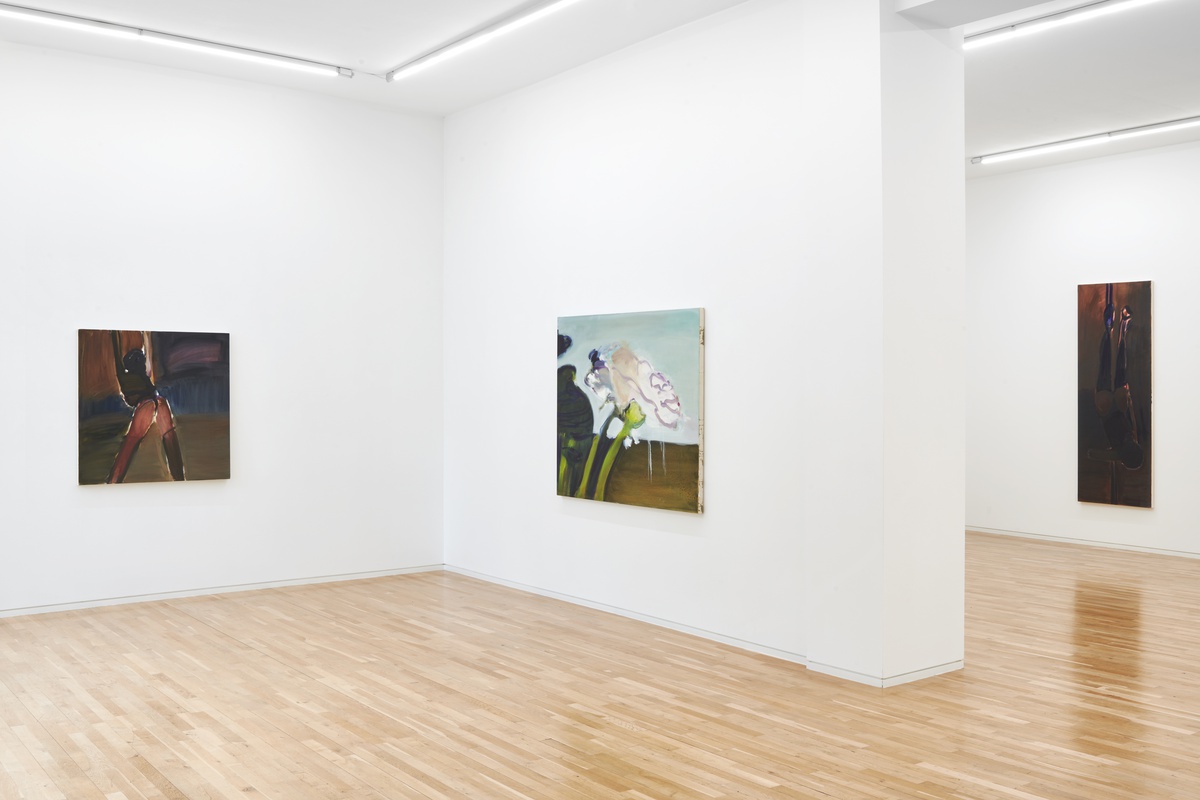
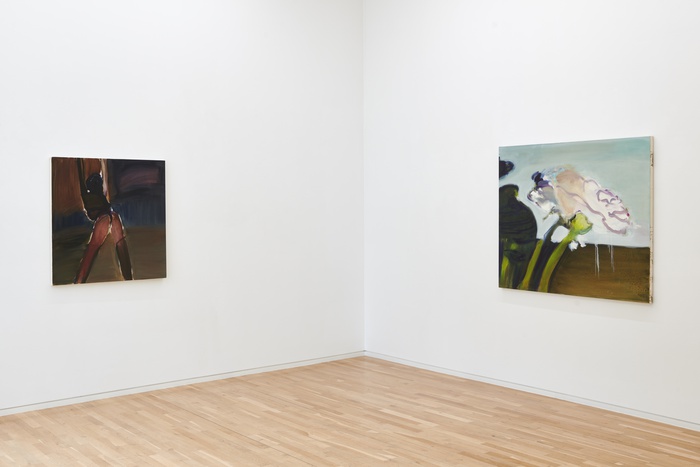
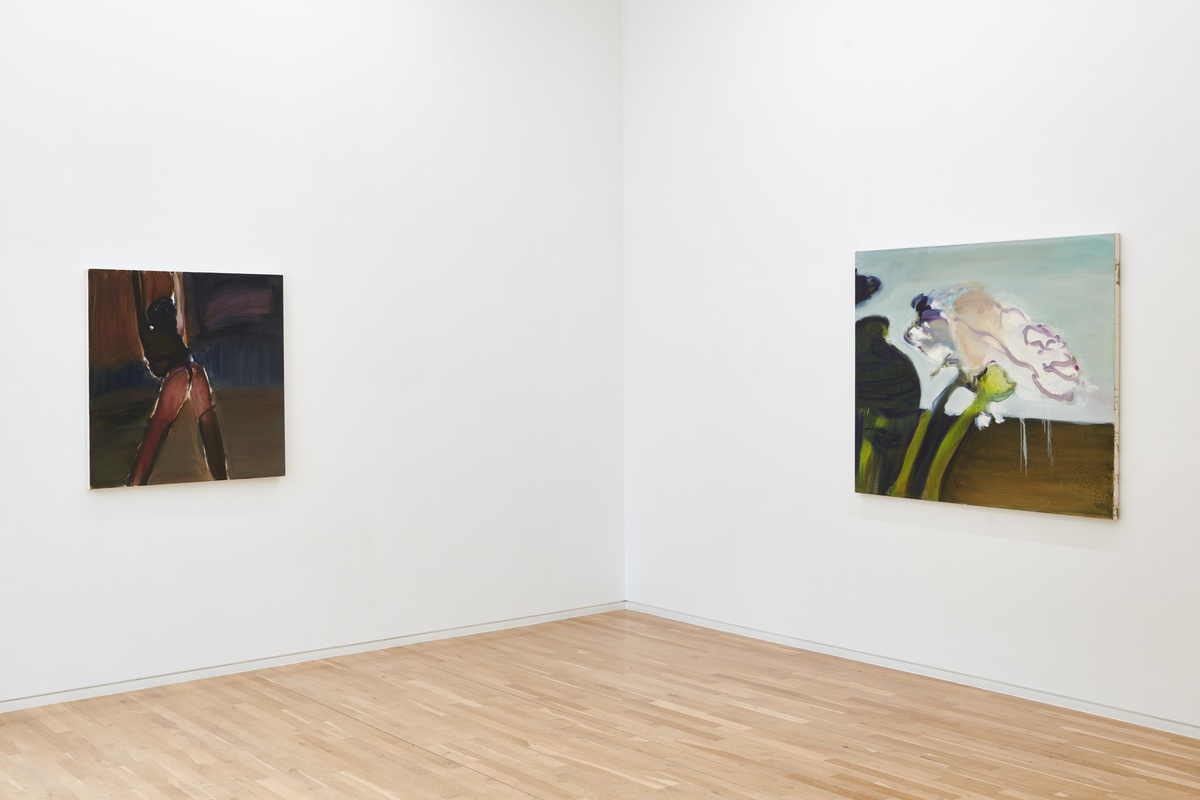
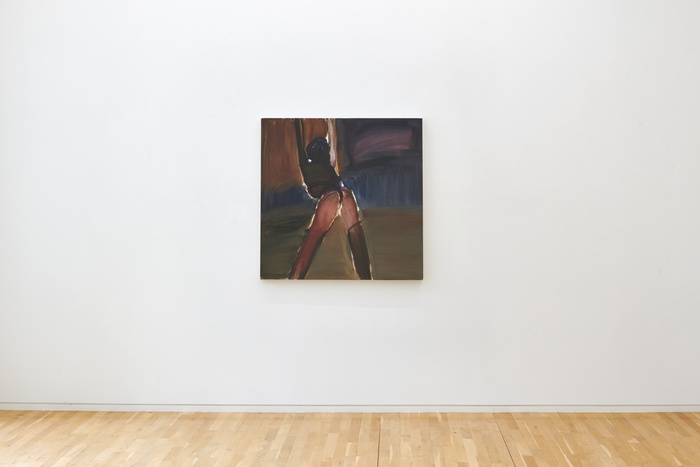
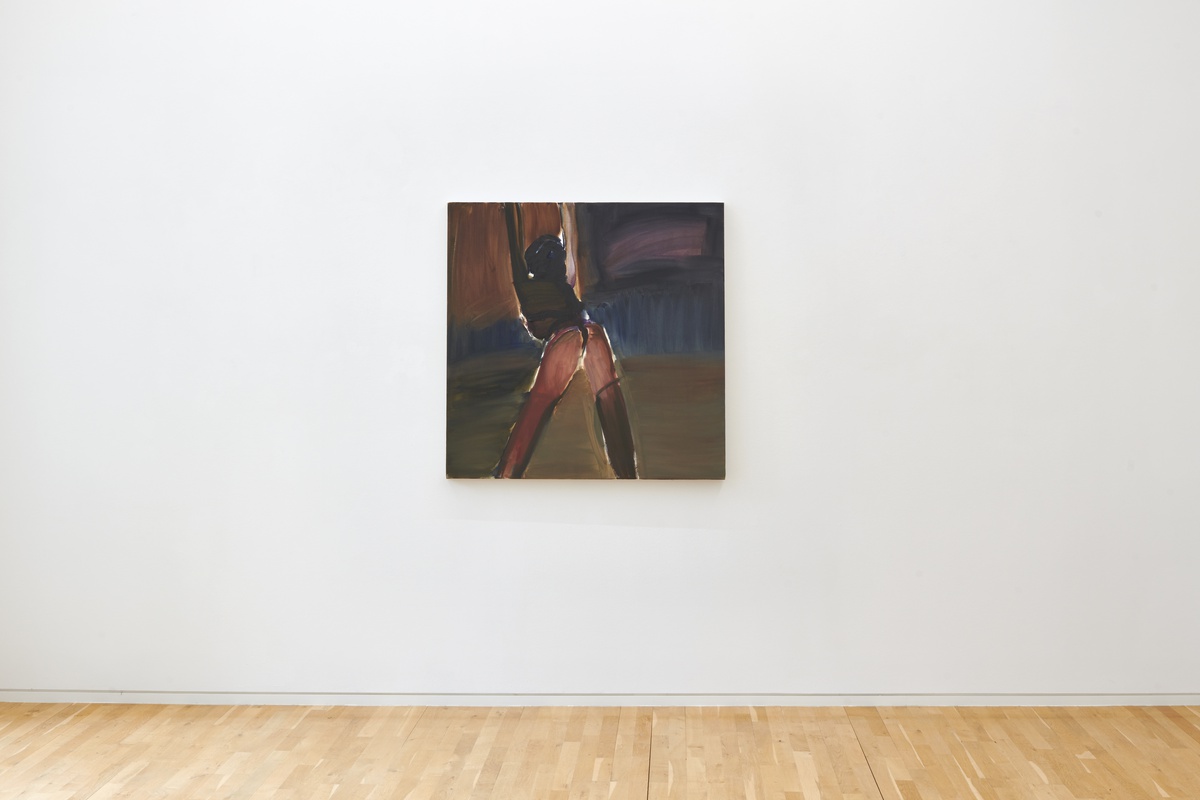
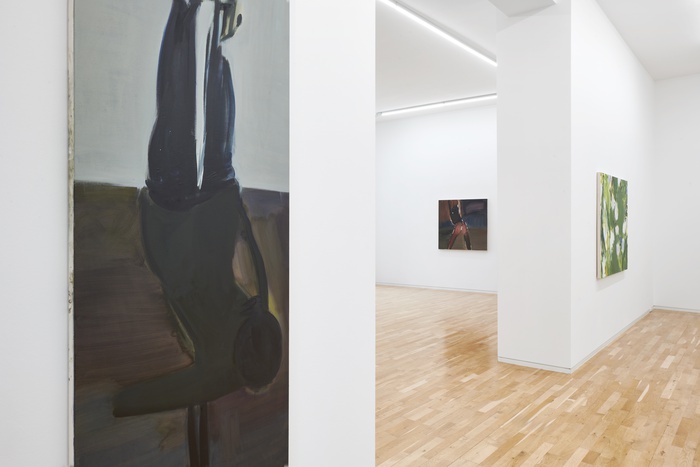

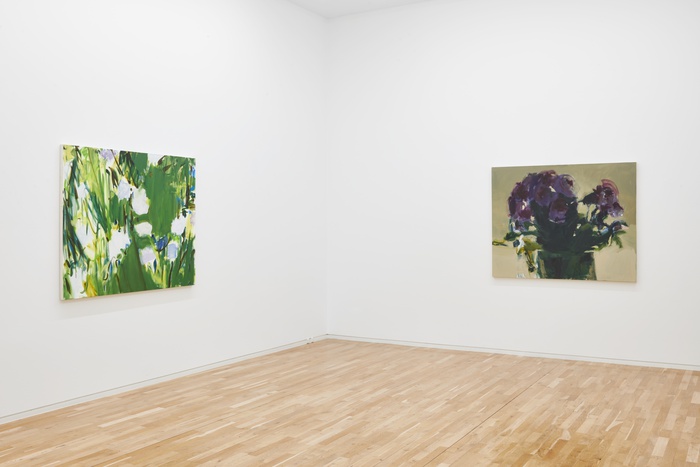
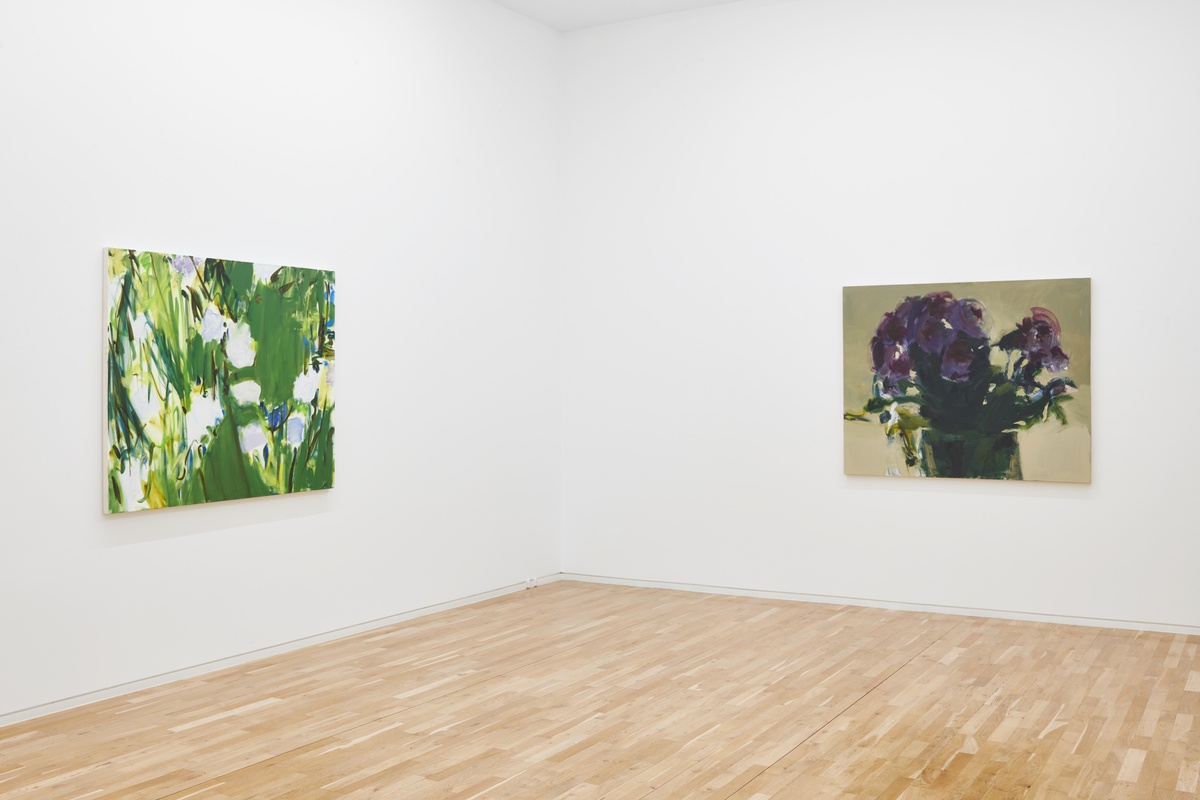

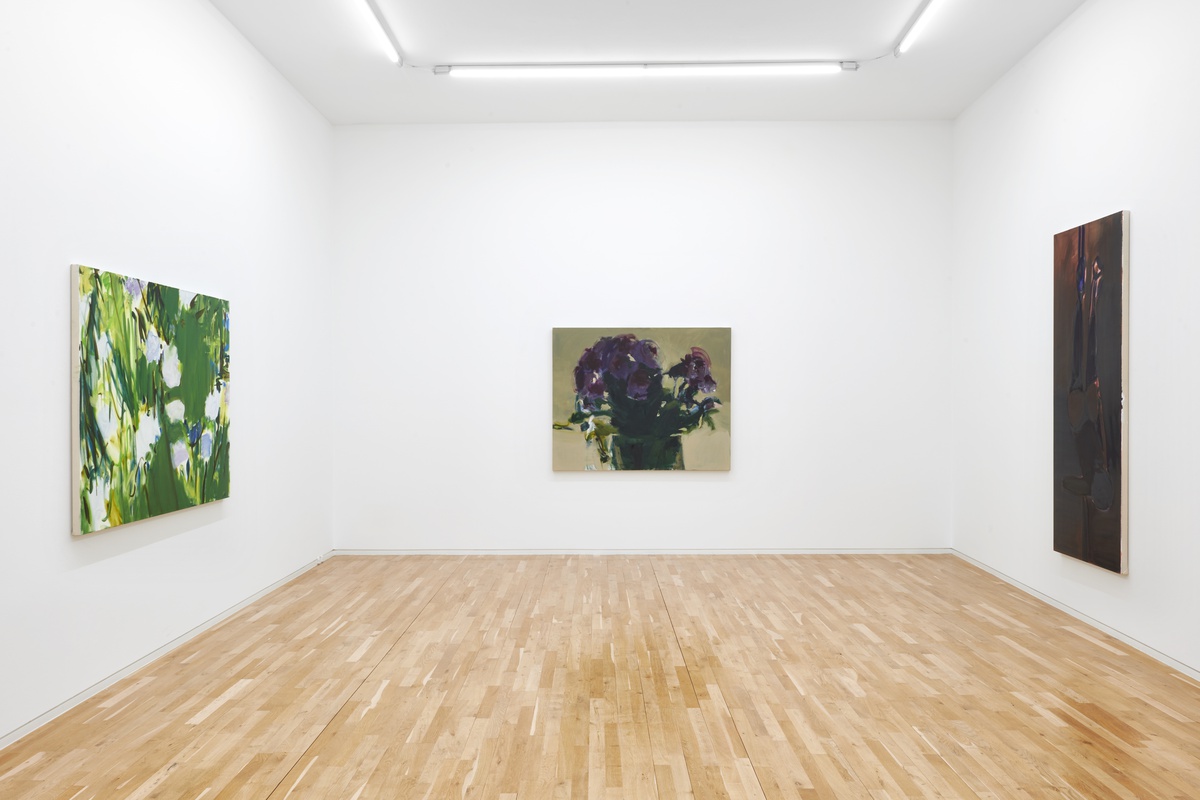
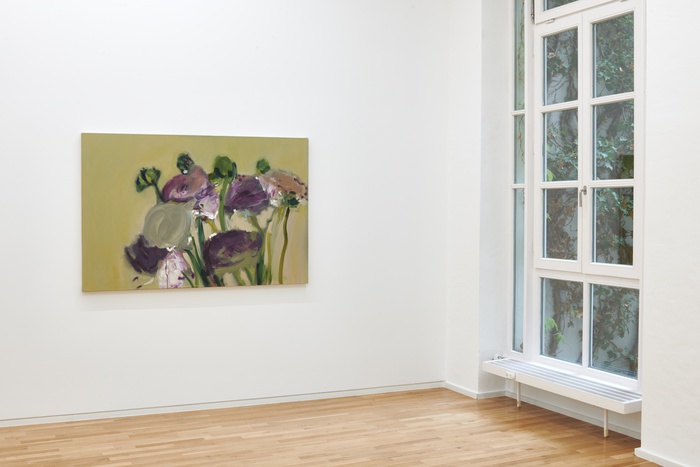
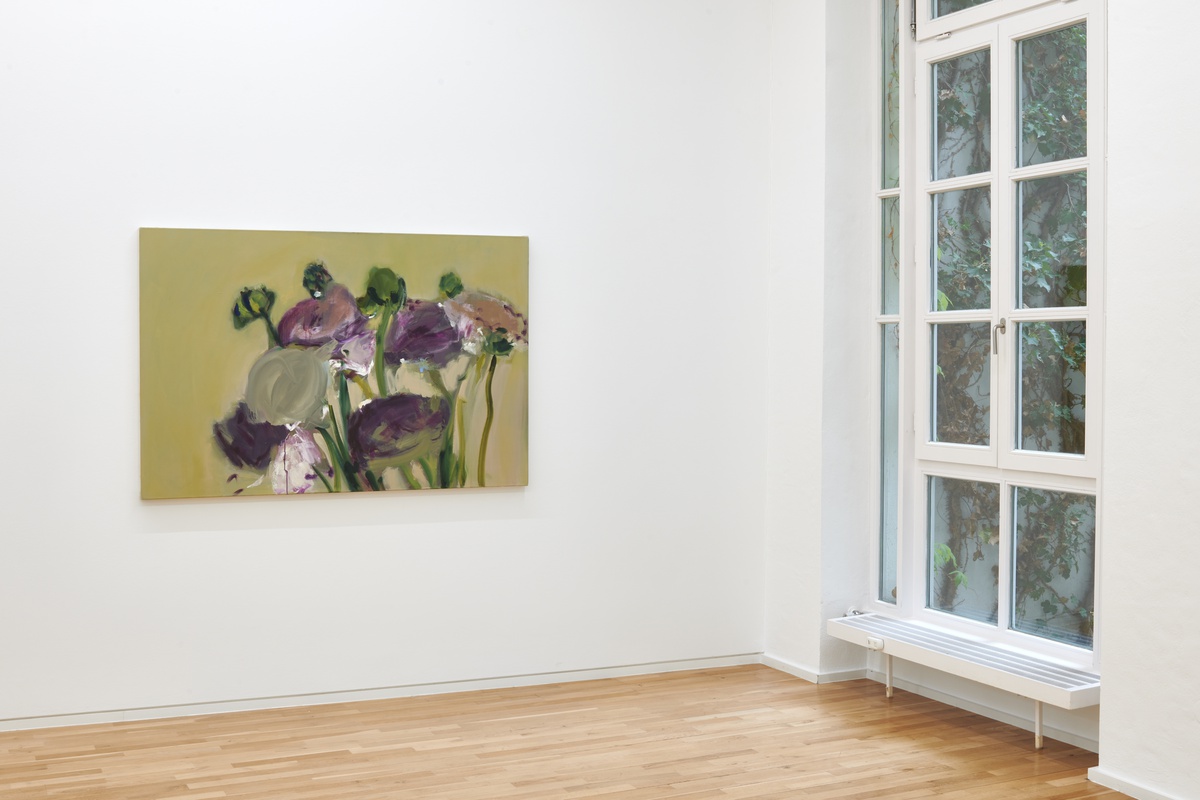

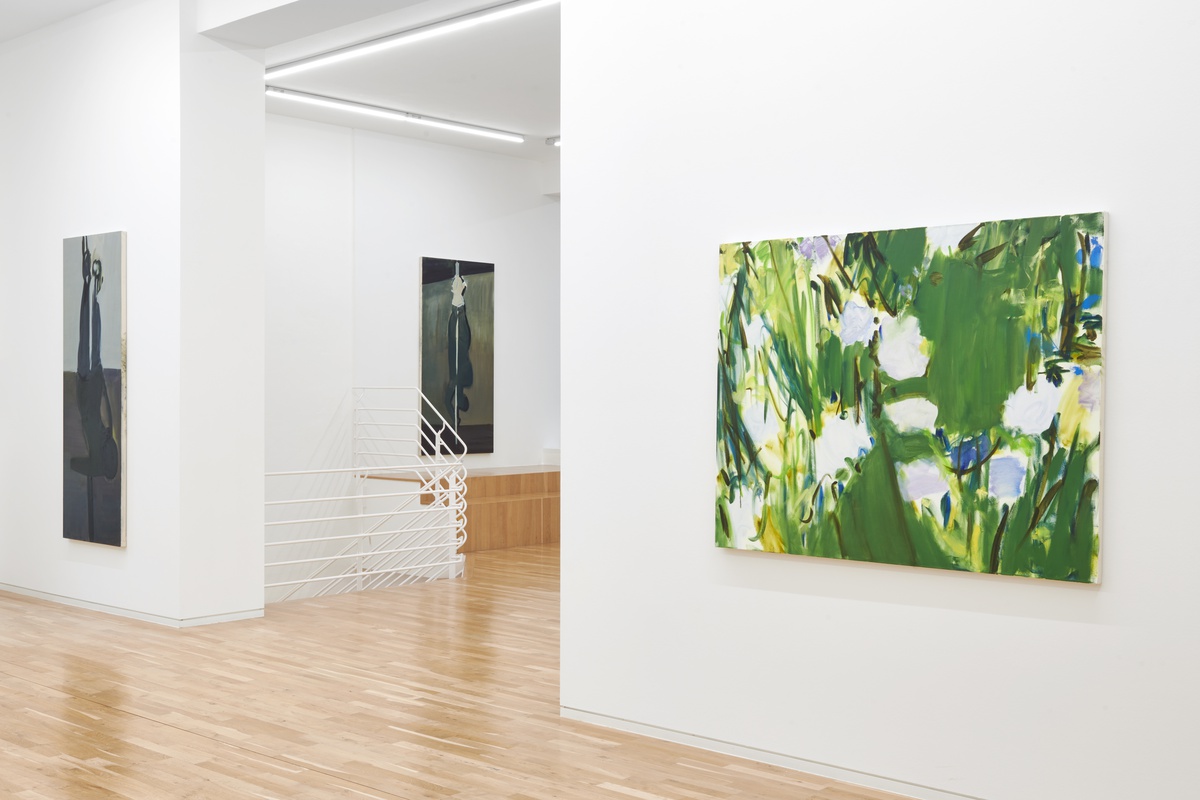
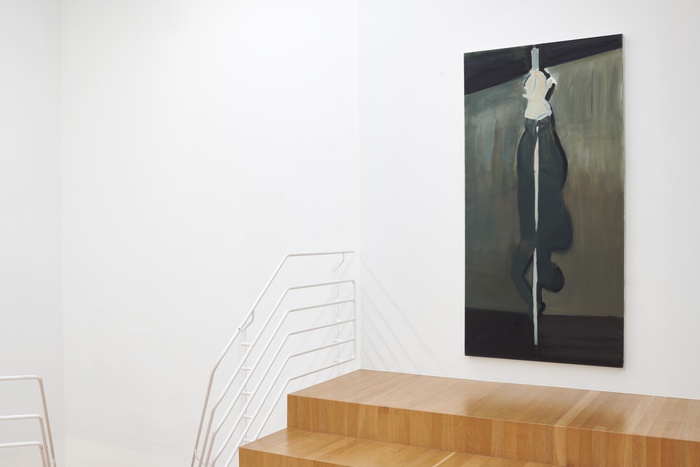
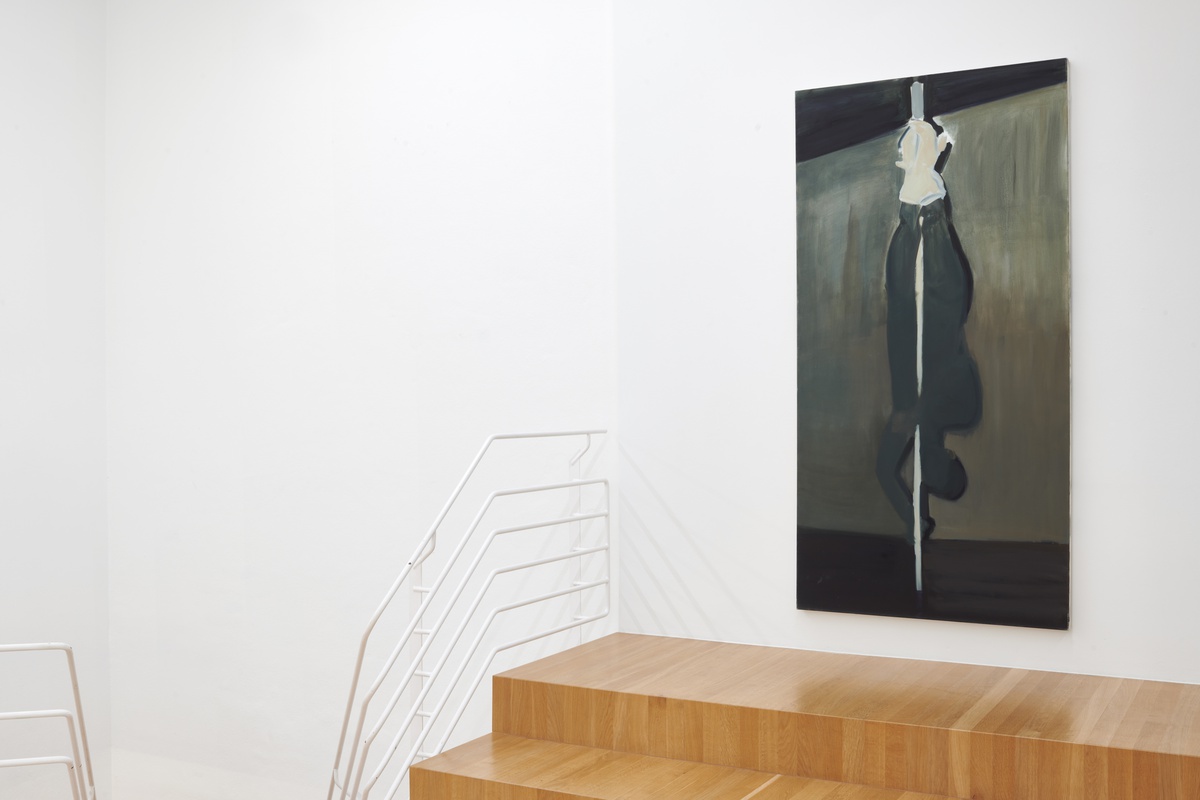
Ausstellungsansicht, Jahn und Jahn, München, 2025
Ausstellungsansicht, Jahn und Jahn, München, 2025
Ausstellungsansicht, Jahn und Jahn, München, 2025
Ausstellungsansicht, Jahn und Jahn, München, 2025
Ausstellungsansicht, Jahn und Jahn, München, 2025
Ausstellungsansicht, Jahn und Jahn, München, 2025
Ausstellungsansicht, Jahn und Jahn, München, 2025
Ausstellungsansicht, Jahn und Jahn, München, 2025
Ausstellungsansicht, Jahn und Jahn, München, 2025
Eröffnung: Freitag, 9. Mai 2025, 18-21 Uhr
Stilleven
„Der Tanz ist etwas ganz anderes. … Er strebt nirgends hin.
Wenn er einen Zweck verfolgt, so ist es ein idealer, ein
Zustand, ein Entzücken, ein Blumenphantom, ein Äußerstes
des Lebens, ein Lächeln – das sich endlich auf dem Antlitz
dessen einstellt, der ihn aus dem leeren Raum wachrief.“
— Paul Valéry, „Dichtkunst und abstraktes Denken“ (1939)
Remi Ajanis Arbeitsmethode, bei der sie minutiös Markierungen auf der Oberfläche versammelt, nur um sie mit Spachtel, Schwamm und Pinsel zu vernichten, ist der einer Schauspielerin vergleichbar, die ihren Text und ihre Handlungen wochenlang auf leerer Bühne einstudiert und dann ihren Auftritt vor Publikum improvisiert. Hier sind Bilder des gelebten Lebens; Bilder des Verlorenen. Die unter dem vielsagenden Titel „Still Life“ versammelten neuen Arbeiten entfalten einen doppelten Bezug auf die frühesten Traditionen des niederländischen „stilleven“ oder der „vanitas“, bescheidener Reflexionen auf die Vergänglichkeit des Lebens, aber auch – das Wort „still“ als Verb statt als Adjektiv auffassend – auf den Versuch in jedem dieser Bilder, die Zeit „stillzustellen“. Ob Wildblumen, die sich im Überschwang sommerlicher Unbekümmertheit vergessen, oder athletische Körper, denen Verrenkungen ein Äußerstes an Anmut abringen: Wir erhaschen aus dem leeren Raum wachgerufene Augenblicke dieser atmenden, schwitzenden Dinge.
Der Organisation von „Spectre“ und „Tear Drop“ (alle Arbeiten 2025) liegen dieselben in die Länge gezogenen Maße von 200 mal 75 cm zugrunde, als erhaschten wir einen kurzen Blick durch eine schmale Öffnung in einen verbotenen Raum. In diesen Bildern sehen wir aufrecht hingestellte oder aber kopfüber in verdrehten Posen erstaunliche Balanceakte vollführende Figuren, akrobatische Körper in höchst bedenklicher Lage. So oder so ist ihre Inszenierung ihrer selbst die Szene, auf die wir Zuschauer unsere Wetten laufen haben. Wie in vielen der prägenden, in Antwort auf Archivfotos entstandenen Gemälde, mit denen Ajani bekannt geworden ist, sind ihre Subjekte hier anonymisiert, Körper, die in opulente Indigotöne und unbestimmbare Grauschattierungen entgleiten. Obwohl sie die menschlichen Gesten von Haltung, Gang und, in „Spectre“, den gerade noch erkennbaren Umriss von Kleidung vortragen, stellen die Figuren sich als menschlich, aber doch nicht ganz menschlich genug dar. So ist es, als habe Ajani diese Figuren unserem hässlichen Begehren entzogen, den Anderen stets zu kategorisieren oder einzuordnen. Stattdessen fordert sie uns auf, Erscheinungsformen von Posen und Gesten über lange Zeiträume hinweg wiederzuerkennen. Erspähen wir nicht etwa in „Tear Drop“ den heiligen Markus, der aus dem Himmel an den Ort des Bildes herabstürzt wie in Tintorettos „Sklavenwunder“? Nehmen wir nicht in der beherrschenden Figur in „Spectre“ etwas von der gemessenen Kraft und der „Ich-weiß-dass-du-mich-anblickst“-Haltung so vieler marmorner Persephonen wahr, etwa derjenigen, die den Innenhof des Isabella Stewart Gardner Museum überblickt? Ajanis Werke sind im Gespräch mit Jahrhunderten gestischer Schöpfung, weil sie eine scharfsichtige Beobachterin der menschlichen Gestalt ist, auch wenn sie ihre Beziehung zu ihren Sujets auf doppelsinniger Distanz hält. Sie enthält sich jeden moralisierenden oder didaktischen Kommentars zu den erotischen Tänzerinnen, wie sie sind: weder Symbole der Ausbeutung von Frauen noch als Protagonistinnen sexueller Freiheit aufgewertet, vielmehr in prekären Situationen befangene Körper, die sich mit gleitender „sprezzatura“ winden und das Schwierigste vollführen, als sei es das Leichteste auf der Welt.
Ajanis Verweis auf das Stillleben in dem Titel, den sie für diese Werkgruppe gewählt hat, lässt mich an einen Essay von Norman Bryson in „Looking at the Overlooked: Four Essays on Still Life Painting“ denken, in dem er die Form der Rhopografie diskutiert – von „‚rhopos‘, belanglose Gegenstände, kleine Waren, Bagatellen … die Darstellung jener Dinge, denen es an Bedeutung ermangelt, die unscheinbare materielle Grundlage des Lebens, die die ‚Bedeutung‘ fortwährend übersieht“. Das Stillleben wurde neben dem Porträt (das auf die Bedeutung der Person rückschließen lässt) und der Landschaft (dito für die Bedeutung des Orts) eine dominante Kunstform, gerade weil es sich an dem nagenden Zweifel an der Bedeutung abarbeitete: Blumen blühen und sterben, die Äpfel faulen, sodass die Form geeignet ist, die Poesie der vergehenden Zeit nachzuzeichnen, nicht, sie zu überhöhen. Bryson weiter: „Die Idee der Bedeutsamkeit kann nur aufkommen, indem sie sich von dem absetzt, was sie für belanglos und unerheblich erklärt; ‚Bedeutung‘ bringt ‚Abfall‘ hervor, das, was man manchmal das ‚Vorübergegangene‘ nennt [eine vergangene Handlung, ein vergangener Zustand, so könnte man sagen], das, was ausgeschlossen oder übergangen wird“. Kurz, das Stillleben ist die Kunstform, der es gelingt, Bedeutung wie Abfall aufzuzeichnen, ihr Thema sind bewusst und ausdrücklich diejenigen Gegenstände, die übergangen werden und doch unsere Aufmerksamkeit auf sich ziehen. Deshalb gilt es bei einem Gemälde wie Ajanis „Last Kiss“ mit seiner melancholischen Konzentration auf zwei Blumen – eine in tiefstem Violett, die andere eine amorphe graue Masse – genau hinzusehen; man bemerke, wie unser Empfindungsvermögen auf die Wahrnehmung einer letzten Umarmung gelenkt wird, obwohl oder gerade weil wir wissen, dass beide bleibende Symbole der Vergänglichkeit sind. Beide Blumen werden bald „Abfall“ sein, doch für einen Augenblick wenigstens fesseln sie den Blick der Künstlerin und weigern sich so, belanglos zu sein.
Die Macht des Stilllebens beruht auf dem Raum, den es überraschenden Wechselwirkungen zwischen Gegenständen und Formen gibt. Man denke nur an Giorgio Morandis Inszenierung verblüffender Oberflächen auf seinen versammelten Vasen oder an die surrealistische Idee einer Nähmaschine und eines Regenschirms, die sich rein zufällig auf einem Seziertisch begegnen. In Ajanis Formenwelt, in der Pigmentfamilien und Färbungen uns ermuntern, wo nicht kausale Verknüpfungen, so doch Ähnlichkeiten zu erkennen, zieht sie uns in jene Räume hinein, die man übersehen hat und die gleichwohl die Spuren der Vergangenheit, des „Vorübergegangenen“ an sich tragen. „Persephone’s Whisper“ erinnert die Betrachterin an Cy Twomblys hedonistische Blumen, Werke erotischen Überschießens und mediterraner Hitze. Zugleich aber führen sie das Schattenbild des Lebens mit sich und wirken durchaus plausibel als Strauß an einem Totenbett. Eingedenk dieser Doppelbedeutungen – Leben und Verlust, Liebe und Trauer – sehen wir, wie Ajanis Blumen sich erheben, während ihre menschlichen Figuren hinsinken. Überall erscheinen in diesen Arbeiten die Regungen des Lebens als gestillte. Mit dem Titel „Full Bloom/Last Breath“ evoziert Ajani Wachstum und Sterben zugleich, die natürliche Blüte eines späten Frühlings und den metaphorischen Winter des Zuendegehens; dazu entwirft die Künstlerin eine Blume als Sturm in Weiß, akzentuiert von (einmal mehr) violetten Linien. In der Raffinesse der gemeinsamen Farbgebung wirkt es, als stünde das Bild in geheimer Verbindung mit dem Violett des Frauenkörpers in „Spectre“, nun kontrastierend mit einem unzugänglichen grau-blaugrünen Hintergrund und einem üppig grünen Vordergrund. Man beachte, was dieser Titel mit der Oberfläche des Bildes macht, das das Schicksal eines überbordend blühenden Lebens einfängt, das einen Augenblick später – im selben Atemzug, möchte man meinen – ausgelöscht werden wird. Eben diese Wirkung hat alle große Stilllebenmalerei auf uns.
Essay von Matthew Holman
Remi Ajani, geb. 1984 in London, hat im Juli 2022 ihr Studium der Kunst an der Slade School of Fine Art in London abgeschlossen. Ihre Diplomausstellung wurde mit dem Almacantar Studio Award ausgezeichnet. 2023 Residency Stipendium der Villa Lena Foundation, Toiano, Toskana, Italien. Ausstellungen: Almine Rech, London (2024); Travesia Cuatro CDMX, Mexico City (2024); FF Projects, Lagos, Nigeria (2023); Marlborough Gallery, London (2023); Sid Motion Gallery, London (2023, solo); Galerie Barbara Thumm, Berlin (2022); ASC Gallery, London (2022) und PM/AM, London (2022).